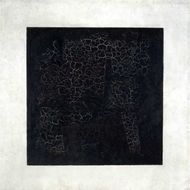Theoretical Neuroscience Group

Гуткин Борис Самуэль
Scientific group leader, Leading Research Fellow

Olesia Dogonasheva
PhD student, Junior Research Fellow

Daniil Vlasenko
Research assistant

Радушев Даниил Олегович
Research assistant

Maria Ivanova
Master student
Our main research goal is to understand the basis of information processing and cognitive processes in the brain by identifying links between neural dynamics and neural function. To that end, we use techniques from theoretical physics, applied mathematics and computer simulation to investigate a broad range of topics in computational neuroscience, including models of drug addiction; models of spiking and non-spiking recurrent networks; models of short-term memory and decision-making; interactions of body and brain in motivated behavior as well as cellular based computations. In addition to the research directions listed below, cross-laboratory modeling projects will be developed together with the other laboratories of the interdisciplinary research center.
Our work
Addictive Processes as pathology of decision making
Addiction presents a complex behavioral process whose causes can be postulated on a multiplicity of levels, from molecular and pharmacological to cognitive. Computational approaches to addiction should bridge the neural with the behavioral/cognitive phenomena. Our approach is multi-level mechanistic modeling . We are striving to synthesize the effects of the drug on the receptor level, neural circuit level and decision making level in order to disentangle the roles of the primary rewarding and hedonic processes of the drug and the opponent processes in the progression from use to addiction. In a complementary approach we are developing algorithmic models of addictive processes based on neuro-economic approaches.
Body/Brain/Mind Interplay: Homeostatic Influences in Motivated Behavior
We stive to understand the neurobiological algorithms with which motivated behavior is responsive not only to external events, but also to the internal physiological state. Our theoretical approach investigates the interaction between the hypothalamic nuclei and the brain reward circuitry, as the neural substrates of homeostatic regulation and reinforcement learning systems, respectively. We integrate these two systems by developing a unified normative theory that gives a physiological definition for reward. This integrative framework gives normative explanations to several behavioral and neurobiological evidence, including temporal discounting of reward, anticipatory responding, extinction burst, modulation of midbrain dopaminergic activity by hypothalamic signals, etc. We are pursuing this framework to understand how internal physiological states shape and influence motivated behavior in social and collective enviroments and how internal states might be inferred from observed behavior.
Cognitive Processes with Brain Oscillations: Speech and Working Memory
We build computational models in order to understand the mechanistic role played by the multiple brain oscillations. We focus on two tell tale cognitive operations: working memory and processing of speech. Working memory is an active information maintenance and use process that is at the very heart of our cognitive abilities. We are studying how different brain rhythms implement various operations necessary for working memory. We develop models to look at the the influence of coherent oscillations and background noise correlations on the stbility of persistent activity. Our models show that both change the memory state from an attractor to a slow transient, with the characteristic life times dependent on the statistics of the background activity and the parameters of the oscillations. We are pursuing the hypotheses that different oscillatory frequency bands, at equal coherence, have a differential effect on the ability of transient stimuli to activate the memory state and an a priori memory state to be deactivated. We are exploring how the oscillation set working memory buffers into different dynamical gating modes allowing underling information loading, selective maintenance and use. We develop detailed models of cortical circuits and perform mathematical analysis to discover the central governing principles of oscillatory working memory. Many biological stimuli present a quasi-rhythmic structure that occurs simultaneously across different timescales, yet it is unclear how the brain decomposes such multiplexed sensory input. Speech is a paradigmatic example of such multiplexed signals, where information is present at phonemic (20-40 Hz), syllabic (2-10 Hz) and prosodic time scales (<2 Hz). Strikingly, neural oscillations in the corresponding time scales, notably theta (4-8 Hz) and low gamma (30-50), have been recorded in the auditory cortex during speech comprehension. Could these oscillations support decomposition of the speech stimuli into syllables and phonemes? We approach this question by building neuronal models of auditory cortical microcircuits to show how coupled generators of theta and gamma oscillations could mediate de-multiplexing of the speech signal.
Have you spotted a typo?
Highlight it, click Ctrl+Enter and send us a message. Thank you for your help!
To be used only for spelling or punctuation mistakes.
